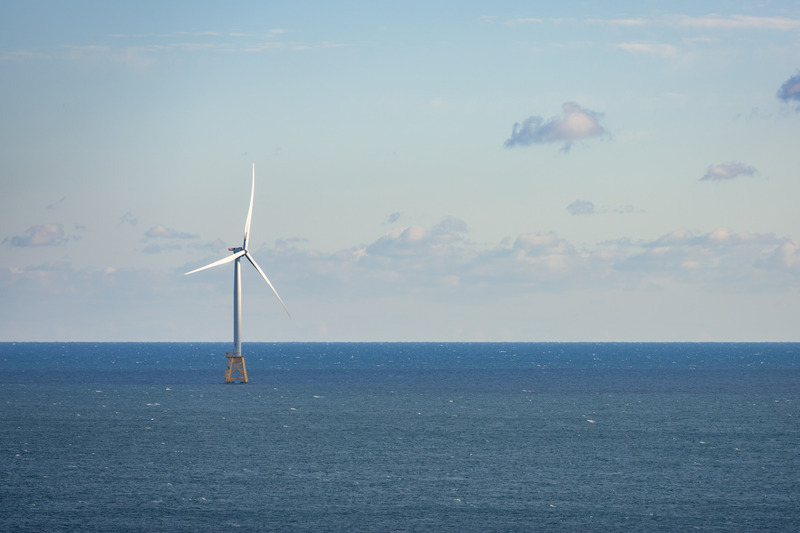


Offshore wind energy grants
Photo by Evan Krape December 13, 2023
Two grants featuring UD faculty look to better assess community impacts of offshore wind development
As the United States grapples with how to best integrate offshore wind facilities into future energy plans, gauging how those coastal communities perceive offshore wind is going to be critical in order to better understand their concerns, preferences and values. Two separate grants totaling $5 million from the United States Department of Energy will look to do just that, with the studies getting input from residents on both the east and west coasts of the United States.
These projects include the University of Delaware. The two UD faculty members involved are Jeremy Firestone, professor in UD’s School of Marine Science and Policy, who is involved in both of the projects, and Nina David, associate professor in UD’s Joseph R. Biden Jr., School of Public Policy and Administration and the director of the Energy and Environmental Policy Program, who is working on the URI-led project.
The east coast project is led by researchers at the University of Rhode Island (URI) and will look to develop social impact markers to help the researchers and the local communities measure the effects of offshore wind energy development. The project will focus on three cities undergoing port redevelopment: London, Connecticut; New Bedford, Massachusetts; and a third to be determined at a future date.
The west coast research project is led by Oregon State University (OSU), and the aim is to interview and survey coastal residents to understand their preferences in areas where offshore wind development has been proposed. As the federal government is in the early stages of leasing areas off the coast of Oregon, California and Maine for floating offshore wind energy projects, one of the ideas advanced has been to encourage project developers to establish agreements with coastal communities about specific community benefits those companies would provide.
Currently, UD’s portion of the funding is $686,122 for the URI project and $264,591 for the OSU project.
David said it is imperative to figure out how offshore wind energy projects will impact the communities that live nearby.
“The promise of offshore wind energy development is significant. But how those benefits accrue, to whom, and in what time period is less understood,” she said. “What is exciting about this project is that we will partner with stakeholder communities to co-produce the indicators that will provide the empirical evidence on the justice and equity impacts of offshore wind.”
Firestone echoed these sentiments, saying that the development of offshore wind power will play an important role in U.S. climate action.
“It also will displace emissions otherwise experienced by communities adjacent to fossil fuel generation plants,” he said. “However, equity also requires consideration of fairness in decision-making and in the allocation of costs and benefits to communities on land and at sea that may be affected by offshore wind power.”
With a background in architecture, environmental science and urban and regional planning, David said a significant component of her work could be described as “engaged scholarship” where the goal is to co-produce knowledge with stakeholders so that the research has a direct impact on the ground.
“I will be working on the surveys and other data collection instruments for this project, but an important role will be to use my background in engaged research to help the project team facilitate community engagement in developing the energy justice indicators that we will track over time,” David said.
Firestone said having two projects on both coasts will help the researchers better determine community preferences from a diverse group of stakeholders.
“The OSU-led research will engage communities adjacent to proposed offshore wind projects in California, Oregon, Washington, and Maine, each of which is much more rural than those adjacent to advanced-planned projects on the east coast,” Firestone said. “It will be an important advance as we know much less about how rural communities perceive offshore wind power, let alone their perceptions of just decision-making processes and outcomes compared to the more urbanized, beach economy communities we have on much of the east coast.”
More information about the projects can be found on the University of Rhode Island website and the Oregon State University website.
Contact Us
Have a UDaily story idea?
Contact us at ocm@udel.edu
Members of the press
Contact us at 302-831-NEWS or visit the Media Relations website

